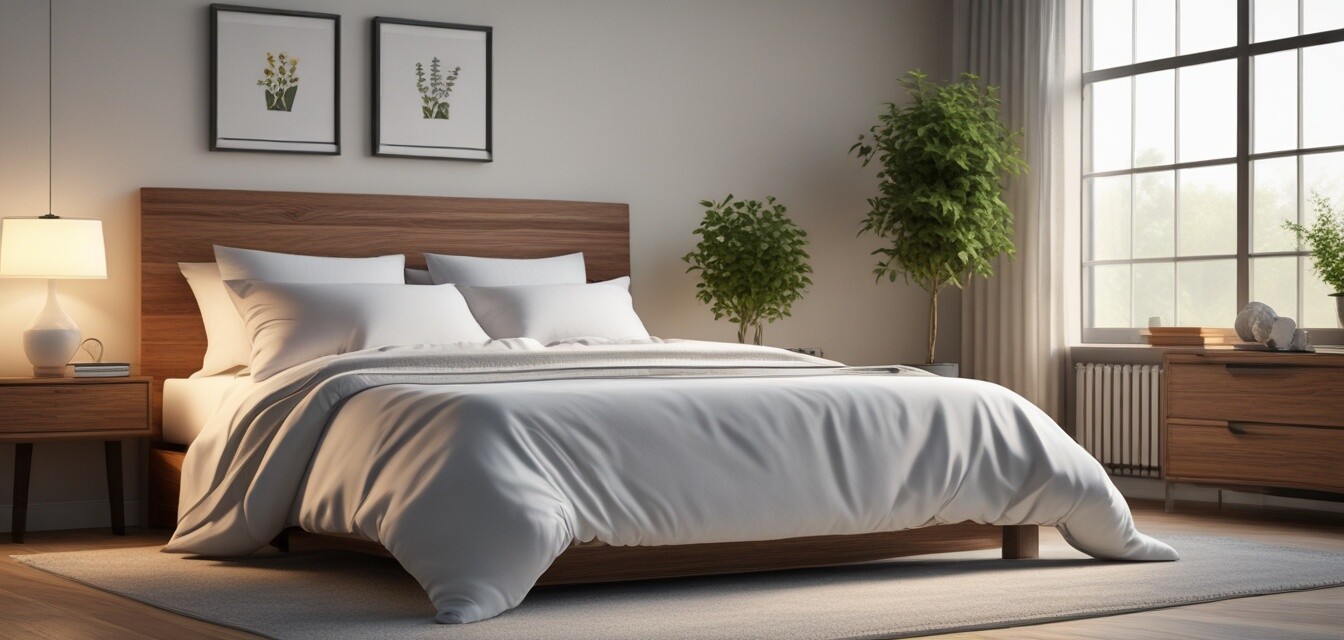
Allergy-Proof Bedding: What You Need to Know
Key Takeaways
- Allergy-proof bedding reduces the risk of allergens like dust mites, pet dander, and pollen.
- Investing in high-quality mattress protectors and duvet covers can significantly improve sleep quality.
- Materials like waterproof and hypoallergenic fabrics are essential for effective allergy protection.
For those struggling with seasonal allergies, ensuring you have the right bedding can mean a world of difference for a restful night's sleep. In this comprehensive guide, we’ll explore the best allergy-proof bedding products and what you need to consider when selecting them. Understanding the role of material, design, and protective features will empower you to make informed decisions and create a cleaner, healthier sleep environment.
Why Consider Allergy-Proof Bedding?
Allergies can disrupt not only your daily life but your nightly rest as well. Dust mites, pet dander, and pollen can accumulate in your bedding, leading to increased allergy symptoms. That’s where allergy-proof bedding comes into play. By investing in specific products designed to combat these allergens, you can take significant strides toward improving your sleep quality.
Types of Allergy-Proof Bedding
Below are some essential types of allergy-proof bedding you should consider for your home:
- Mattress Protectors: Keep your mattress safe from spills and allergens.
- Mattress Encasements: Provide a complete barrier against dust mites and bed bugs.
- Duvet Covers: Protect comforters from accumulating allergens.
Key Features to Look for in Allergy-Proof Bedding
When choosing the right bedding to combat allergies, consider the following features:
| Feature | Description |
|---|---|
| Waterproof | Prevents liquids and spills from seeping into your bedding, protecting it from mold and mildew. |
| Hypoallergenic | Designed to reduce allergic reactions by minimizing exposure to common allergens. |
| Machine Washable | Easy to clean and maintain, ensuring that your bedding remains fresh and free from allergens. |
| Breathable Materials | Keeps you comfortable while preventing moisture build-up, which can attract allergens. |
Top Allergy-Proof Bedding Products
To help you get started, here are some of the top-rated allergy-proof bedding products available:
SureGuard Queen Size Mattress Protector
100% waterproof and hypoallergenic, this mattress protector is made of premium cotton terry, ensuring a clean and fresh sleeping environment.
Learn MoreHOSPITOLOGY PRODUCTS Mattress Encasement
This zippered encasement offers a waterproof barrier and dust mite protection with a breathable design for comfortable sleep.
Learn MoreAllersoft Cotton Duvet Protector
This cotton duvet protector features a patented weave to keep allergens at bay while providing a breathable and cool sleeping experience.
Learn MoreCare and Maintenance of Allergy-Proof Bedding
Proper care of your allergy-proof bedding is essential to maintain its protective features:
- Wash your bedding regularly in hot water to remove allergens.
- Dry your bedding completely to prevent moisture and potential mold growth.
- Check for signs of wear and replace bedding as needed to ensure continued protection.
Conclusion
Creating an allergy-free sleeping environment starts with selecting the right bedding. By investing in quality mattress protectors, encasements, and duvet covers, you can effectively minimize your exposure to allergens. Remember to consider the features mentioned in this guide, and don't shy away from investing in the right products for you and your well-being.
Pros
- Improved sleep quality due to reduced allergens.
- Enhanced comfort through breathable materials.
- Durable and easy to clean options available.
Cons
- Some products may be pricier than standard bedding.
- Certain materials may require specialized care.
For more information about managing allergies in your home, check out our resources on Understanding Seasonal Allergies and Home Environment Optimization.
If you are looking for more allergy prevention tips, visit our article on Allergy-Prevention Tips.


